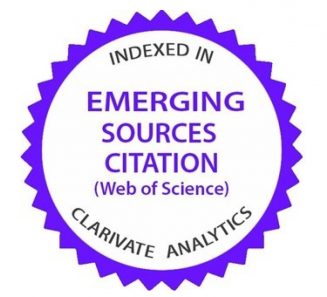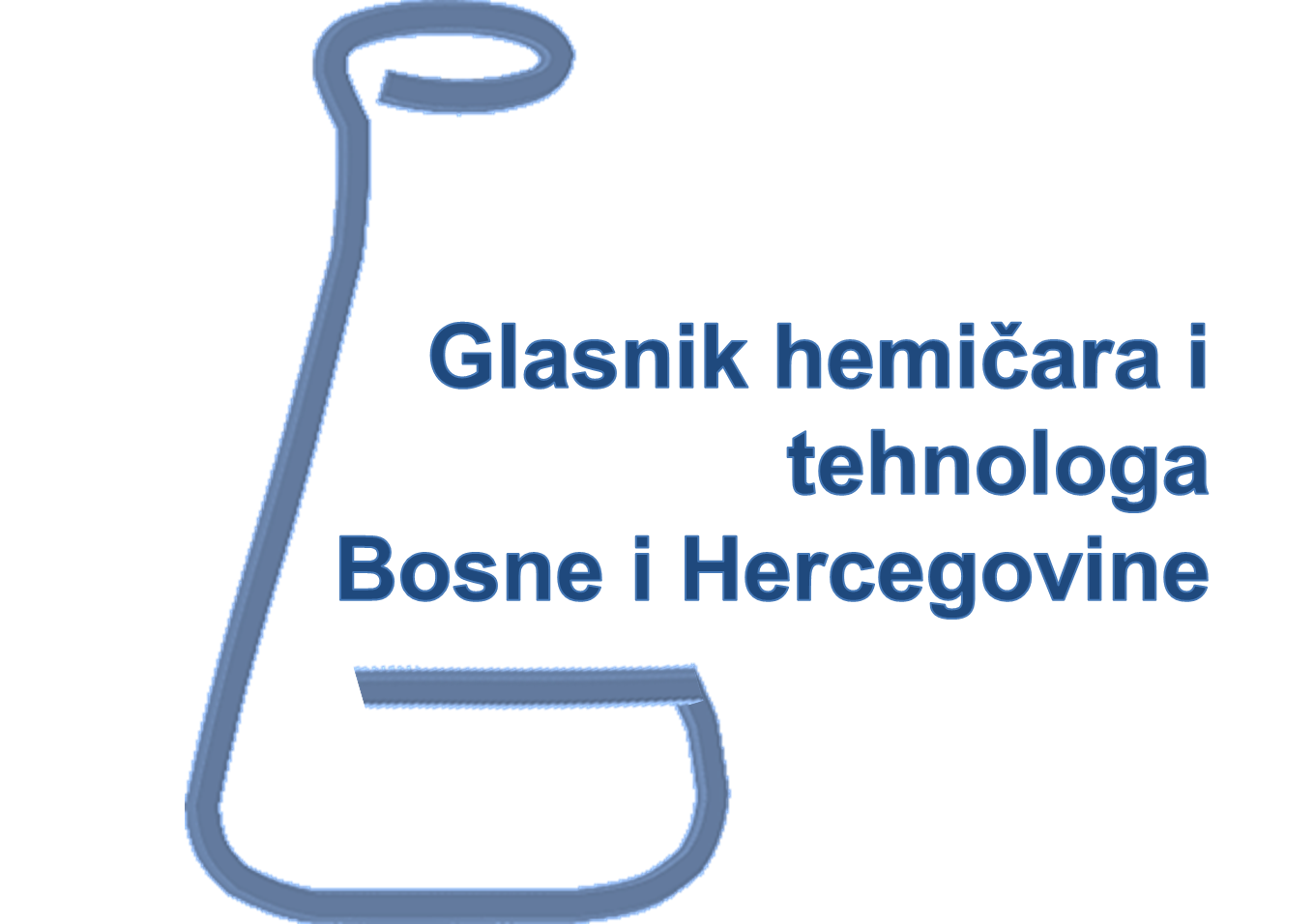|
|
Bulletin of the Chemists and Technologists of Bosnia and Herzegovina
Issue 54
Publication date: June 2020 |
|
Table of contents
Phenolic Composition, Antioxidant and Antimicrobial Activity of Cotoneaster Medik. Species from Bosnia and Herzegovina Original Scientific Article
Mahmutović-Dizdarević Irma, Dizdar Muamer, Čulum Dušan, Vidic Danijela, Dahija Sabina, Jerković-Mujkić, Anesa, Bešta-Gajević Renata
DOI: 10.35666/ghtbh.2020.54.01
Abstract: Although the genus Cotoneaster Medik. includes mainly ornamental species, there are some data regarding its biological activity. The purpose of this study was to analyze the content of phenolic compounds, acetylcholinesterase inhibition, antioxidant and antimicrobial activity of methanolic extracts of leaf and bark of C. integerrimus Medik., C. tomentosus (Aiton) Lindl. and C. horizontalis Decne. The C. tomentosus leaf extract exhibited the highest content of total phenols (135.86 mg GAE/g) and flavonoids (18.17 mgQE/g), and also the most potent antioxidant activity against nonbiogenic free radicals, while the highest inhibition of acetylcholinesterase had the leaf extract of C. horizontalis (IC50 0.34 mg/mL). All extracts showed a significant level of antibacterial and antifungal activity against tested microbial strains. The largest inhibition zones were observed against Candida albicans treated with C. integerrimus leaf extract (30.50±0.50 mm). Furthermore, C. integerrimus extract was the most effective in the majority of bacterial strains tested. The results indicated that methanolic extracts of the investigated Cotoneaster species have promising bioactive and therapeutic potentials.
Bulletin of the Chemists and Technologists of Bosnia and Herzegovina 54, 1-6.
Serum Iron Concentration and Lipid Profile in Type 2 Diabetes Patients Original Scientific Article
Mandal Šaćira
Abstract: Recent studies have been showed important role of elevated iron levels in pathogenesis of Type 2 Diabetes mellitus (T2D) and insulin resistance. The aim of this study was to determine serum of free iron concentration in T2D patients and find out associations with lipid profile. The study included 51 participants (27 healthy control and 24 no treated diabetes patients), with ages from 45 to 65 45-65 ages and both gender. As expected, concentrations of serum iron were elevated in diabetic patients compare to healthy subjects while statistical significant difference were shown between iron levels in control group and group with good control of glycaemia (p<0.05). In addition, there was a significant positive correlation between free iron concentration and LDL cholesterol levels and negative significant correlation between iron concentrations with HDL cholesterol in diabetics (p<0.05). These findings suggest that increase serum of free iron concentrations may have an important role and influence in development of disease, especially in lipid metabolism and profile as well in risk of further complications of diabetes.
Bulletin of the Chemists and Technologists of Bosnia and Herzegovina 54, 7-12.
Chromatographic Methods for the Determination of Primula Acid 1 Content in Primulae extractum fluidum Original Scientific Article
Dedić Mirza, Imamović Belma, Bečić Ervina, Gičević Armina, Žiga-Smajić Nermina, Medanhodžić- Vuk Saira, Šober Miroslav
DOI: 10.35666/ghtbh.2020.54.03
Abstract: Primula veris L. (Primulaceae)is healing plant, whose root is officially used to treat cough associated with cold. Other reported indications are respiratory, thoracic and mediastinal disorders. These effects are result of high contents of triterpenoid saponins and phenolic glycosides. Primula acid 1 (PA 1, also primulasaponin 1) is main active component in Primula elatior L. This paper presents an optimized high pressure liquid chromatography (HPLC) method for the determination of primula acid 1 content in Primulae extractum fluidum. TLC was performed to check for the presence of the substance of interest. The determination was performed by reversed phase chromatography using C18 as a stationary phase. The mobile phase used for separation consisted of 0.2% H3PO4 and acetonitrile. This method was validated through different parameters. The detection limit for primula acid 1 was LD=10.41 µg/ml, and the quantification limitwas LQ=34.69 µg/ml. In order to determine the content of primula acid 1, a calibration curve was constructed, and the content of primula acid 1 was calculated by the equation of the calibration curve and was 0.2793 mg per gram of extract. The results and simple preparation of sample show that HPLC is the method of choice for this type of analysis.
Bulletin of the Chemists and Technologists of Bosnia and Herzegovina 54, 13-18.
Phytochemical Investigation and Antioxidative Capacity of Triterpenes Present in Plant Species Belonging to Lamiaceae Family Original Scientific Article
Jordamović Nadir, Niksic Haris, Muratovic Samija, Gusic Irma, Koric Emina, Alagic Larisa, Pasic Maja, Duric Kemal
DOI: 10.35666/ghtbh.2020.54.04
Abstract: Triterpenes are persistently associated with observed bioactivities of extracts obtained from plant material that contains these very important natural products. Many species belonging to Lamiaceae family have been used for the presence of essential oil and very little is known about the presence of the triterpene substances in this family. Qualitative and quantitative analyses of this very important substances, in the aerial parts of eight species, all belonging to Lamiaceae family, were investigated in this study. Different extracts containing triterpene substances were tested by DPPH method to evaluate their antioxidative capacity. TLC and HPLC methods, used for the analytical determination of triterpenes, showed the presence of betulin, betulinic acid, ursolic acid and oleanolic acid. Betulin (3.2 mg/g) and betulinic acid (37.1 mg/g) were the most abundant triterpene components in the hexane extracts of Rosmarinus officinalis L. Ursolic acid (0.14 mg/g) was the most abundant triterpene compound in the hexane extract of Thymus pulegioides L. All tested samples demonstrated DPPH scavenging activity in a concentration dependant manner, with a wide range of IC50 values from 0.4 mg/mL to 3.3 mg/mL.
Bulletin of the Chemists and Technologists of Bosnia and Herzegovina 54, 19-26.
Investigation of the Antioxidant Synergisms and Antagonisms among Caffeic, Ferulic and Rosmarinic Acids using the Briggs-Rauscher Reaction Method Original Scientific Article
Gojak-Salimović Sabina, Ramić Sabrina
Abstract: Phenolic acids have been attracting huge attention over recent years due to their prominent antioxidant activity and potential health benefits. In this study, the antioxidant activity of caffeic, ferulic, and rosmarinic acids was evaluated using Briggs-Rauscher reaction method. In addition to single phenolic acids at different concentrations (50, 100, 200 and 250 µM), equimolar mixtures of two phenolic acids and all three phenolic acids were tested. The best ability to inhibit oscillations, i.e. the highest antioxidant activity showed rosmarinic acid at a concentration of 250 µM. Inhibition time of the Briggs-Rauscher oscillating reaction mixture was obtained experimentally for the different combinations of phenolic acids and compared with theoretical values calculated by adding up the effects of phenolic acids analyzed individually. The most of tested phenolic acids mixtures showed a difference in the antioxidant activity when compared to individual values of their constituents. The highest synergistic effect showed a mixture of caffeic acid and ferulic acid at a concentration of 250 µM while the highest antagonistic effect showed the mixture of caffeic acid, ferulic acid and rosmarinic acid at same concentration.
Bulletin of the Chemists and Technologists of Bosnia and Herzegovina 54, 27-30.
Gender differences in chemical engineering students identified in understanding of rolling motion Original Scientific Article
Vidak Andrej
Abstract: In this research papaer we presented the results of exploration of gender differences in conceptual understanding of rolling motion (velocities and work-energy principle). For this purpose, we have selected nine conceptual items and conducted experiment with 184 first year students at the Faculty of Chemical Engineering and Technology, University of Zagreb. Results show that male students significantly outperformed female students. We detected particularly large differences on items that tests knowledge of the rolling phenomena. Results of our research can help teachers to create lessons that are adapted to general student population.
Bulletin of the Chemists and Technologists of Bosnia and Herzegovina 54, 31-36.
Modified QuEChERS extraction and GC-MS analysis of selected cannabinoids from human urine Original Scientific Article
Korać Nermina, Vidic Danijela, Sutlović Davorka
Abstract: The aim of this work is to apply a modified QuEChERS method to extract cannabinoids from urine, using a mixture of salts for extraction in an appropriate ratio instead of commercially available cartridges. The analysis was performed on blank urine to which a known concentration of tetrahydocannabinol (THC), cannabinol (CBN) and cannabidiol (CBD), 11-hydroxy-Δ9-tetrahydrocannabinol (THC-OH) and 11-nor-9-carboxy-Δ9-tetrahydrocannnabinol (THC-COOH) was added. Six solvents, as well as four solvent mixtures, were tested for extraction and the solvent mixture acetonitrile : dichloromethane (1:3) was selected for which the best recovery factor was obtained. Derivatization of all samples was done with MSTFA (N-trimethylsilyl-N-methyl trifluoroacetamide) + 1% TMCS (2,2,2-Trifluoro-N-methyl-N-(trimethylsilyl)-acetamide, chlorotrimethylsilane) at room temperature.
The prepared extracts were analyzed by a coupled system, gas chromatography-mass spectrometry (GC-MS) in full-scan mode. Peaks of selected cannabinoids are wellseparated indicating that there was no interference with the selected analytes. The results were calculated from a calibration curve ranging from LOQ to 1000 ng/mL for selected cannabinoids with a correlation factor over 0.998. The LOD and LOQ for THC are (3.0 ng/mL; 9.0 ng/mL), for CBN (5.0 ng/mL; 18.0 ng/mL) for CBD (5.0 ng/mL, 16.0 ng/mL), for THC-OH (2.6 ng/mL; 8.7 ng/mL) and for THC-COOH (5.0 ng/mL; 15.0 ng/mL). The recovery factor was recorded in the range of 79.40% for THC-COOH to 94.86% for CBN.
Bulletin of the Chemists and Technologists of Bosnia and Herzegovina 54, 37-44.





